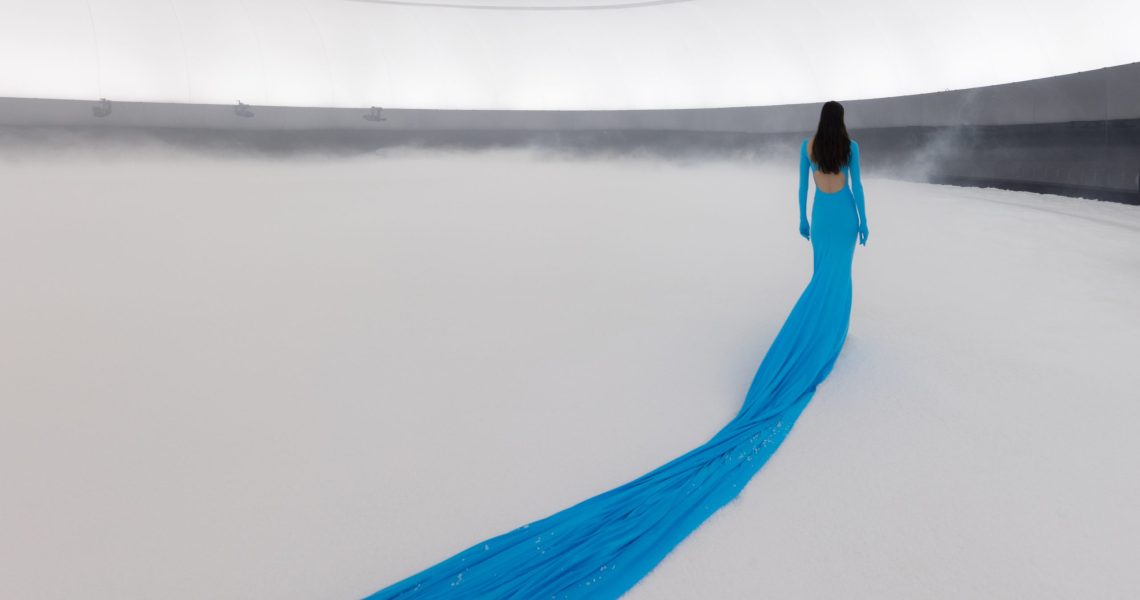After the big Balenciaga controversy last year, the brand’s mononymous designer, Demna, seems to have learned a lesson. In an interview with Vogue last week, he spoke about his history of creating provocative work, but admitted he may have gotten too focused on the buzz and the controversy that surrounded a collection, to the detriment of what should be the main attraction: the clothes.
“I have decided to go back to my roots in fashion, as well as to the roots of Balenciaga, which is making quality clothes — not making image or buzz,” he told Vogue.
But in an industry increasingly focused on spectacle and a media landscape that forces brands to compete for attention within the endless scrolls of TikTok feeds, can clothes speak for themselves?
A cursory look at recent runway events suggests that spectacle is a major element of modern fashion. Think of the Coperni spray-on dress the brand showed on Bella Hadid at Paris Fashion Week last October, which wasn’t for sale in any way. Then there was the Schiaparelli lion-head dresses, made just for the show and a driver of headlines. These moments went viral, while the collections shown at the same events got lost in the shuffle.
Liz Giardina, creative director at Another Tomorrow, said it’s easy for designers to let the storytelling and marketing overwhelm the clothes.
“There are two avenues designers can take: they can design things for real people to wear or they can design things to be seen on digital platforms,” Giardina said. “What’s interesting in fashion is the relationship between product and body, how people wear the clothes. When you lose sight of that, you lose sight of the customer.”
Giardina said focusing on virality can also damage a brand’s sustainable credits, as big, flashy shows often require the incorporation of single-use garments, like the Schiaparelli lion dresses. As Another Tomorrow seeks to up its luxury fashion credibility — something Giardina said is a major goal for the brand — she’s looking for ways to replicate the success of buzzy luxury brands like Gucci without repeating their mistakes. This means having a presence at NYFW, but in the form of a subdued presentation at the Mercer Hotel, as Another Tomorrow did on February 13-14. That’s instead of, say, a raucous — and expensive — runway show at Spring Studios.
Ad position: web_incontent_pos1
Some brands are beginning to move away from the demanding work of building hype. Fletcher Kasell, one half of the design duo behind Tanner Fletcher, said his brand avoided doing a runway show this season, which it had done in previous years, because it had become too time-consuming.
“It’s a lot of work to do a show, and we ultimately felt like it was taking time away from perfecting the product for us,” Kasell said.
But Kasell also rejected the idea that designers shouldn’t think about anything but the clothes.
“I can see how some designers could take it too far, but you do want to tell a story about your clothes, and shows and campaigns and marketing are a big part of doing that,” he said. “Of course, the clothes should be the focus, but telling the story around the clothing is 50% of the job.”
The pressure for brands to create increasingly eye-catching, even controversial, moments comes in part due to the fragmented nature of the media ecosystem. Brands trying to get a message out now have to compete with all the other mountains of content on Instagram and TikTok. Paid ads on these platforms have skyrocketed in price, rising 61% at Meta and 185% at TikTok between 2021 and 2022. Organic moments, boosted by stunt casting and intentional controversy courting, becomes a more cost-effective way to get a message out there.
Ad position: web_incontent_pos2
“When fashion brands fall into a business model where a limited number of SKUs generate the majority of their revenue, they end up relying on spectacle to maintain their position in the market, attract new, and often younger, audiences, and generate excitement for expanded product categories,” said Tierney Wilson, svp of strategy and consulting at digital agency January Digital. “In order to sustain long-term brand health and relevancy, creative direction that supports both product excellence and a unique POV is essential.”




